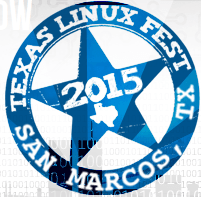While FOSS Force gave you a look at setting up KDE Plasma on the desktop in Don Parris’ article last week, KDE recently jumped into the mobile fray by announcing KDE Plasma Mobile at their Akademy conference this week in Spain.
While it joins an already crowded field, with the likes of Android, Ubuntu Touch, Firefox OS and others already in the mobile OS space, Plasma Mobile “offers a free — as in freedom and beer — user-friendly, privacy-enabling, customizable platform for mobile devices,” wrote Sebastian Kugler, a lead architect, on KDE’s website. “Plasma Mobile is currently under development with a prototype available providing basic functions to run on a smartphone.”






 I’ve spent a good deal of time, as well, kicking this around with my partner-in-ink Larry Cafiero. And some of the things I’ve taken away were not gotten face-to-face: Folks like Steven Vaughan-Nichols and Matt Hartley have discussed it through their preferred media in one way or another.
I’ve spent a good deal of time, as well, kicking this around with my partner-in-ink Larry Cafiero. And some of the things I’ve taken away were not gotten face-to-face: Folks like Steven Vaughan-Nichols and Matt Hartley have discussed it through their preferred media in one way or another.
 Since the introduction of Fedora.next — the umbrella program for the roadmap for the distro going forward — the distro comes in three basic flavors: Workstation, Server and Cloud. Workstation is the desktop/laptop version — and workstation version for businesses. Cloud and Server are pretty self-explanatory.
Since the introduction of Fedora.next — the umbrella program for the roadmap for the distro going forward — the distro comes in three basic flavors: Workstation, Server and Cloud. Workstation is the desktop/laptop version — and workstation version for businesses. Cloud and Server are pretty self-explanatory.



 Actually, of course, it’s not about winners and losers. It’s about what you like. It’s about preferences. After all, unless you’re a diehard command line person, the desktop is how you interact with your computer.
Actually, of course, it’s not about winners and losers. It’s about what you like. It’s about preferences. After all, unless you’re a diehard command line person, the desktop is how you interact with your computer.